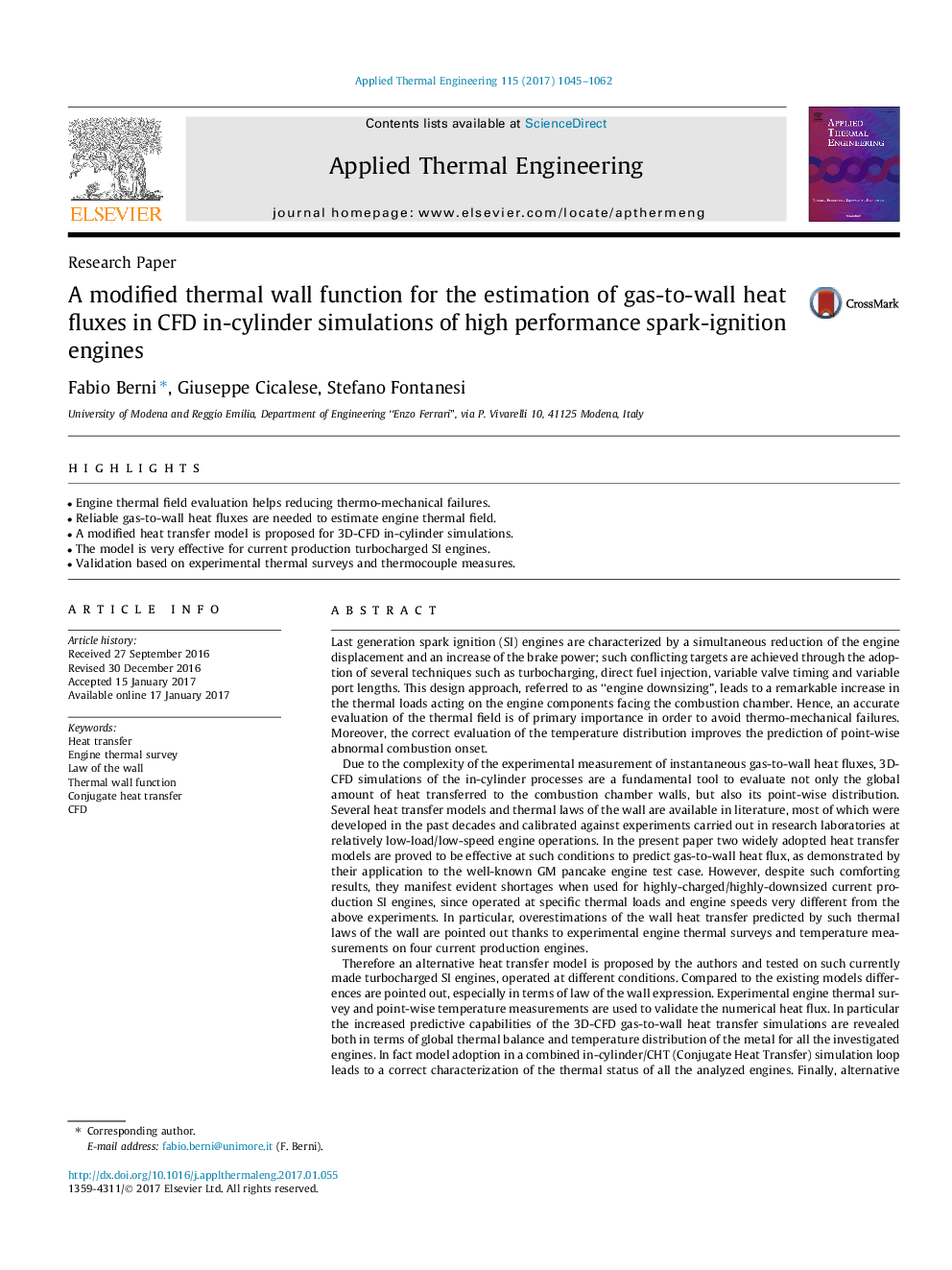| Article ID | Journal | Published Year | Pages | File Type |
|---|---|---|---|---|
| 4991667 | Applied Thermal Engineering | 2017 | 18 Pages |
Abstract
Therefore an alternative heat transfer model is proposed by the authors and tested on such currently made turbocharged SI engines, operated at different conditions. Compared to the existing models differences are pointed out, especially in terms of law of the wall expression. Experimental engine thermal survey and point-wise temperature measurements are used to validate the numerical heat flux. In particular the increased predictive capabilities of the 3D-CFD gas-to-wall heat transfer simulations are revealed both in terms of global thermal balance and temperature distribution of the metal for all the investigated engines. In fact model adoption in a combined in-cylinder/CHT (Conjugate Heat Transfer) simulation loop leads to a correct characterization of the thermal status of all the analyzed engines. Finally, alternative model adoption for the investigated current production high specific power DISI turbocharged engines operated at full load and high revving speed is critically motivated adopting the “isothermicity parameter” ζ which represents an indication of the thermal state of the boundary layer, being a characteristic scale of the ratio between gas and wall temperatures.
Related Topics
Physical Sciences and Engineering
Chemical Engineering
Fluid Flow and Transfer Processes
Authors
Fabio Berni, Giuseppe Cicalese, Stefano Fontanesi,
